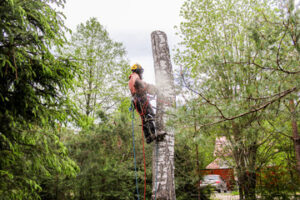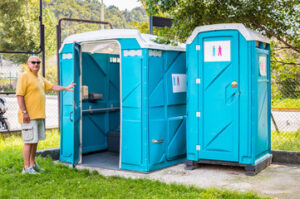A regular car wash might keep a vehicle clean, but Car Detailing Gastonia NC takes it a step further. It restores a car’s appearance, protects surfaces from damage, and helps it retain value.

Many products used in detail work require specific prep, rinsing, or removal processes, so follow instructions carefully. It is also recommended that gloves and eye protection be worn when working with these materials.
The car’s exterior is subjected to the harshest conditions of the environment in which it is driven. UV rays and salt air are constant challenges to its paint, which is why it needs the most frequent attention of any part of a vehicle. Detailing often includes a thorough cleaning of the paint and all other exterior components, a decontamination process using a clay bar or another similar method, and the application of a layer of protective coating. More advanced car detailers or enthusiasts seeking a showroom shine may also perform a paint correction to remove swirl marks, etchings and other surface imperfections from the paint.
In the past, a simple car wax following a hand wash was the go-to form of paint protection, but this has given way to high-tech ceramic coatings and other paint sealants that offer superior durability and hydrophobic properties. The choice of which product to use depends on the specific conditions in which the detailing is being performed. Some products will have better results when used in direct sunlight, while others work best when they are applied in a shaded area with cool temperatures.
During the pre-wash process, a high quality snow foam is used to loosen dirt particles and help expose any serious contamination issues that need to be addressed. Then a good quality, low pH car wash shampoo is used with a microfiber wash mitt to gently clean the exterior without scratching or marring the surface of the vehicle. The wash is then rinsed and wiped dry, removing any remaining dirt or water spots.
A bug and tar remover product is usually sprayed on any hard-to-reach areas, including the bumper and side-view mirrors, and is then scrubbed with a brush or rag. The wheel wells and tires are then cleaned with the same approach. These steps are followed by rinsing and washing the car with a 2-bucket method.
Depending on the specific condition of the finish, the final step of the exterior car detailing process may include a clay bar or other chemical decontamination method to fully clean the paint and eliminate any bonded contaminants. A layer of protective wax or paint sealant is then applied, and if required, an iron removal product may be used to prevent rust blooms from developing on the wheels or underbody. Rubber, vinyl and chrome accents are usually polished during this stage as well.
Interior
At its most basic level, car detailing is making your vehicle look as close to brand new as possible. It is a process that goes far beyond washing, valeting or buffing. It includes both restorative processes, which predominantly apply to the paintwork, as well as enhancement and protection stages.
If you are looking to get your car detailed for the first time, it’s important to find a reputable detailer that offers everything you need in one package. This will save you money and the hassle of buying products separately. It’s also a good idea to ask your detailer how long it will take to complete the job. A full detailing can take up to a week, and it’s important to make sure you have enough time for your car to be in the shop.
The first step in a car detailing process is a thorough clean. This is done using the best cleaning materials for each specific area of your car. For example, if you have leather seats, the detailer will use a special product designed to protect and clean them. Likewise, fabric seat material will receive a protective coating to resist stains and keep them clean longer. The interior of your vehicle will be cleaned, as will the wheels and wheel wells. Generally, this will involve vacuuming the surfaces as well as wet cleaning any areas where there is dirt or debris build-up.
In addition to cleaning your car, a professional detailer will often apply an extra coat of wax to protect the finish from oxidation. This is a great way to protect your investment and extend the life of your vehicle’s exterior.
It’s also a good idea to remove any accessories from your car that could scratch or damage it. This means things like long necklaces, bracelets and watches, fanny packs, chastity belts and monocles. This will help to prevent any scratches or smudges that may occur during the cleaning process.
Tires
The tires on your car play a key role in its performance. They support the vehicle load, transmit traction and braking forces to the road surface and absorb shocks. In addition, they must have sufficient tread depth and air pressure to maintain contact with the road and prevent the tire from slipping on uneven surfaces.
A tire is a complex structure made up of many parts and materials. While most tires are still made of natural rubber, today they also contain fabric, steel and silica, as well as a wide range of chemicals. The most important function of a tire is to provide grip on the road, which is accomplished by a combination of physical and chemical processes.
Tires are built in layers, starting with the bead – a ribbon of high-strength steel cable that’s coated in rubber. The bead holds the tire’s air inside and also seals it tightly against the wheel rim. It’s designed to withstand the strong forces exerted by tire mounting machines and other equipment.
The next layer is the body ply, which consists of multiple layers of various textiles and cords that add strength to the tire’s casing. These are often polyester, rayon, nylon and aramid, and they’re bonded to the rubber with different combinations of fillers such as carbon black and silica. These additives improve properties such as tear and abrasion resistance, rolling resistance and antioxidation.
Next is the tread, which is made of a special rubber that’s designed to resist wear and provide traction. It’s molded in to the precise size and shape that the tire engineer has specified. The tread is surrounded by the sidewall, which protects it from damage and is molded in with important details such as the size and speed rating of the tire, as well as safety warnings.
The whole tire is then run through a curing machine, which functions something like a waffle iron, molding in all of the markings and tread patterns. The final product is a green tire that’s been vulcanized with heat, which bonds the different components together to form the solid rubber mass we know and love as a car tire.








